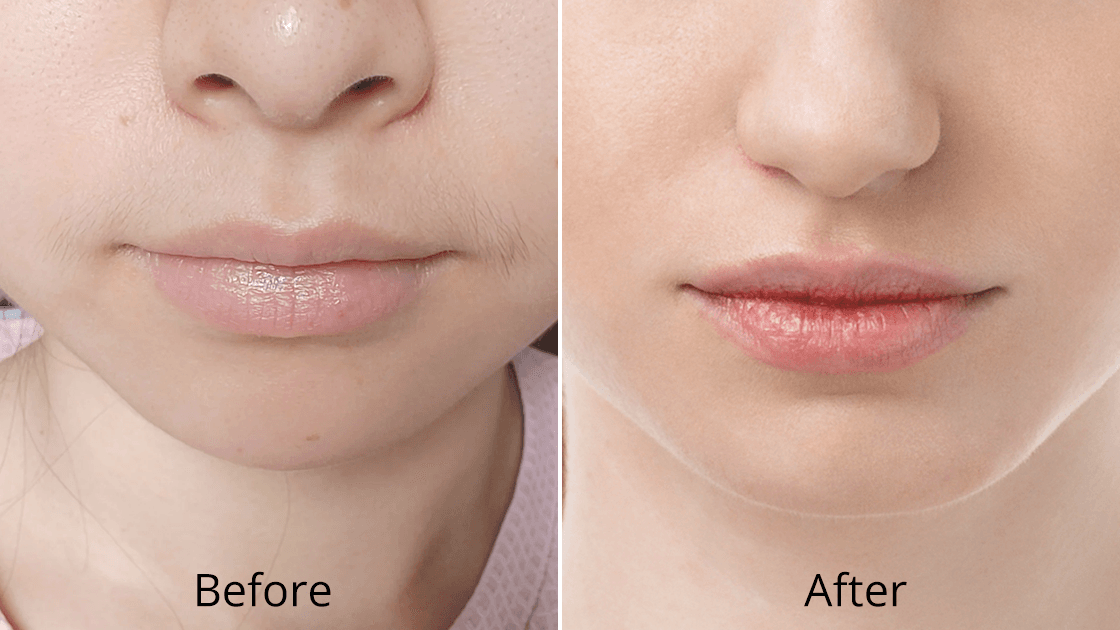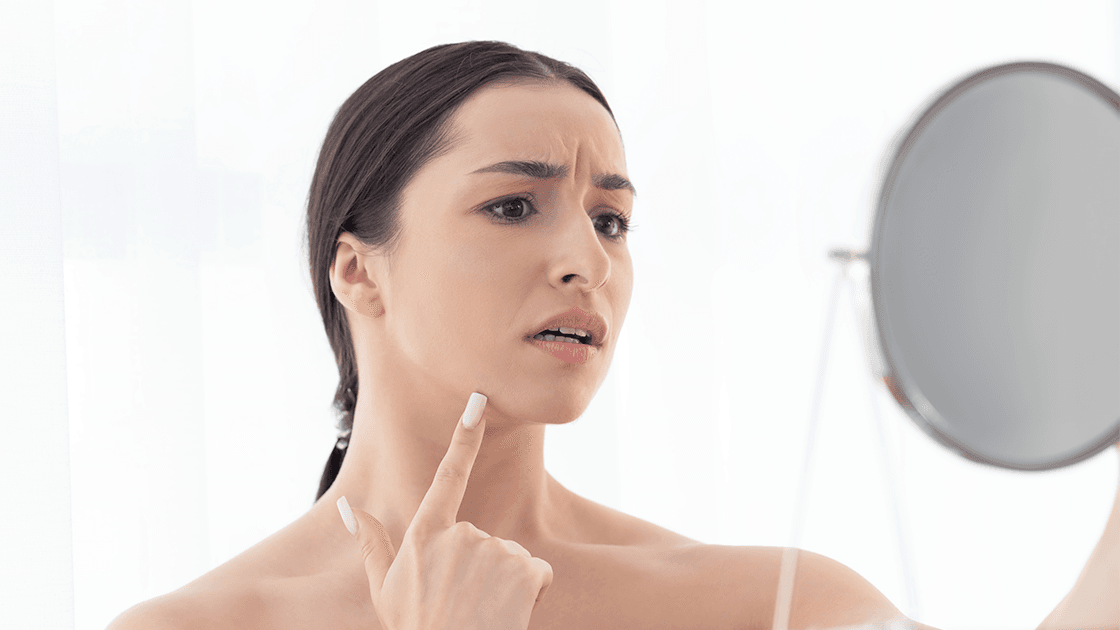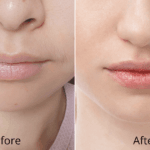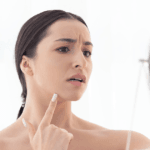1. Introduction: The Lingering Effects of Summer on Your Skin
Summer may be drawing to a close, but the impact of months of sun exposure continues to manifest on your skin long after the season ends. While many people focus on achieving the perfect tan during warmer months, the underlying photodamage often remains hidden beneath the surface, only becoming apparent as the tan fades. Understanding the comprehensive nature of UV-induced skin damage and implementing effective post-summer recovery strategies is essential for maintaining healthy, youthful-looking skin and preventing long-term complications.
1.1 Why Sun Damage Doesn’t Fade with Your Tan
Many individuals mistakenly believe that once their summer tan fades, any associated skin damage will also diminish. However, this assumption is fundamentally flawed from a dermatological perspective. While melanin production temporarily darkens the skin as a protective mechanism against UV radiation, the underlying cellular damage caused by ultraviolet exposure persists indefinitely. Solar elastosis, DNA mutations in keratinocytes, and the degradation of collagen and elastin fibers continue to affect skin structure and appearance long after the tan has disappeared. The temporary bronzing effect masks deeper issues such as photoaging, hyperpigmentation, and compromised skin barrier function, making early intervention crucial for optimal outcomes.
1.2 The Role of UV Exposure in Premature Aging
Ultraviolet radiation serves as the primary catalyst for premature skin aging, a process scientifically termed photoaging. UV-A rays penetrate deep into the dermis, causing immediate damage to collagen and elastin networks, while UV-B rays primarily affect the epidermis and contribute to DNA damage and inflammatory responses. This dual mechanism of photodamage accelerates the natural aging process by decades, leading to the premature development of fine lines, wrinkles, age spots, and loss of skin elasticity. The cumulative effect of chronic sun exposure creates a cascade of cellular dysfunction that manifests as visible signs of aging, making post-summer recovery treatments not just cosmetic interventions but necessary medical procedures for skin health maintenance.
2. Understanding Sun Damage and Its Impact
The comprehensive understanding of sun damage extends far beyond superficial concerns, encompassing complex biological processes that affect skin health at the cellular level. Recognizing the various manifestations of photodamage and their long-term implications is crucial for developing effective treatment strategies and preventing future complications.
2.1 What Is Sun-Damaged Skin?
Sun-damaged skin represents a spectrum of pathological changes resulting from chronic exposure to ultraviolet radiation. These changes encompass both acute and chronic manifestations, ranging from immediate inflammatory responses to long-term structural alterations in skin architecture. The damage occurs at multiple levels, affecting the epidermis, dermis, and underlying vascular structures, creating a complex interplay of cellular dysfunction that requires comprehensive treatment approaches.
2.1.1 Types of Sun Damage: Hyperpigmentation, Wrinkles, Rough Texture
Post-inflammatory hyperpigmentation and solar lentigines represent the most common forms of UV-induced pigmentary disorders. These conditions result from dysregulated melanocyte activity and abnormal melanin distribution within the epidermis and dermis. Solar elastosis contributes to the development of coarse wrinkles and rough skin texture through the accumulation of abnormal elastic fibers in the papillary dermis. Actinic keratoses, while precancerous, also fall within the spectrum of sun damage and require careful monitoring and treatment. The combination of these factors creates a distinctive pattern of photoaging that significantly impacts both skin appearance and function, necessitating targeted therapeutic interventions.
2.1.2 How UV Light Alters Skin Structure
Ultraviolet radiation induces profound structural changes in skin architecture through multiple biochemical pathways. UV-A exposure activates matrix metalloproteinases (MMPs), particularly MMP-1 and MMP-3, which systematically degrade collagen and elastin fibers in the extracellular matrix. Simultaneously, UV-B radiation causes direct DNA damage through the formation of cyclobutane pyrimidine dimers and 6-4 photoproducts, leading to cellular dysfunction and potential malignant transformation. The inflammatory cascade triggered by UV exposure releases cytokines and reactive oxygen species, creating an environment of chronic oxidative stress that perpetuates tissue damage. These molecular changes manifest as visible signs of photoaging, including loss of skin elasticity, formation of wrinkles, and altered pigmentation patterns.
2.2 Signs You Need Post-Summer Skin Repair
Identifying the need for professional intervention requires careful assessment of both visible and subclinical signs of photodamage. Early recognition of these indicators allows for timely treatment and prevention of more severe complications.
2.2.1 Common Skin Conditions After Sun Exposure
Melasma: Appears as symmetric brown patches on the face, often worsened by sun exposure.
Solar lentigines: Flat, pigmented brown spots typically seen on the face, hands, shoulders, and chest.
Seborrheic keratoses: Benign, wart-like skin growths that may darken or become more prominent after UV exposure.
Telangiectasias: Visible, dilated capillaries that often become more pronounced after intense sun exposure.
Post-inflammatory hyperpigmentation (PIH): Darkening of acne scars or minor skin injuries due to increased melanin activity triggered by UV rays.
2.2.2 When Moisturizer Isn’t Enough
Standard skincare routines become insufficient when dealing with moderate to severe photodamage. Topical moisturizers and over-the-counter products cannot effectively address deeper structural damage or significant pigmentary disorders. When hyperpigmentation persists despite consistent use of sunscreen and topical lightening agents, professional intervention becomes necessary. The presence of deep wrinkles, significant textural changes, or confluent pigmentation indicates the need for advanced treatment modalities. Additionally, when sun damage affects self-confidence or quality of life, seeking professional treatment becomes not just a cosmetic choice but a wellness necessity. The limitation of topical treatments in addressing dermal-level damage makes laser therapies an essential component of comprehensive photoaging management.
2.3 Long-Term Risks of Untreated Sun Damage
The consequences of ignoring sun damage extend far beyond cosmetic concerns, potentially leading to serious medical complications that require ongoing surveillance and treatment.
2.3.1 From Brown Spots to Skin Cancer
The progression from benign solar lentigines to malignant lesions represents a significant concern in dermatological practice. While most brown spots remain benign, the same UV exposure that causes pigmentation also increases the risk of skin cancer development. Actinic keratoses, rough scaly patches that develop on sun-exposed skin, are considered precancerous lesions with a 10-20% risk of progression to squamous cell carcinoma. The presence of multiple pigmented lesions can make it challenging to detect early signs of melanoma, emphasizing the importance of regular dermatological surveillance. Additionally, chronic inflammation from untreated sun damage creates a microenvironment that may promote carcinogenesis through the sustained production of inflammatory mediators and oxidative stress.
2.3.2 The Aging Acceleration Effect
Untreated photodamage creates a cycle of accelerated aging that compounds over time. The continued breakdown of collagen and elastin, combined with impaired cellular repair mechanisms, leads to increasingly visible signs of aging. This process is particularly pronounced in areas of chronic sun exposure, where the combination of environmental factors and accumulated damage creates a perfect storm for premature aging. The psychological impact of visible aging can significantly affect quality of life and self-esteem, making early intervention not just a medical necessity but a wellness imperative. Furthermore, the oxidative stress associated with chronic photodamage may contribute to systemic aging processes, highlighting the importance of comprehensive skin health management.
3. What Is Pico Laser Therapy and How It Works
Pico laser therapy represents a revolutionary advancement in laser technology, utilizing ultra-short pulse durations measured in picoseconds (trillionths of a second) to achieve unprecedented precision in treating various skin conditions. This innovative approach has transformed the landscape of dermatological treatments by offering superior efficacy with minimal side effects.
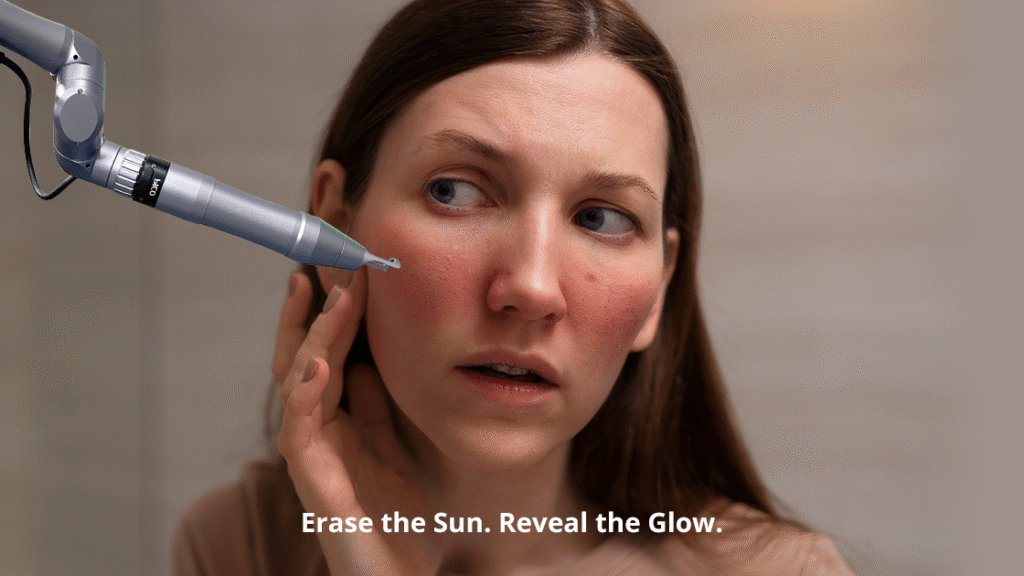
3.1 Picosecond Pulse Technology Explained
Picosecond laser technology operates on the principle of delivering extremely short bursts of laser energy that interact with target tissues in a fundamentally different manner than traditional nanosecond lasers. The ultra-short pulse duration, typically ranging from 300 to 750 picoseconds, creates a photoacoustic effect rather than relying primarily on photothermal mechanisms. This photoacoustic phenomenon generates intense pressure waves that mechanically disrupt target structures without generating excessive heat, significantly reducing the risk of thermal damage to surrounding tissues. The technology utilizes specific wavelengths, commonly 532nm and 1064nm, to target different chromophores and tissue depths. The 532nm wavelength effectively targets superficial pigmentation and hemoglobin, while the 1064nm wavelength penetrates deeper to address dermal pigmentation and stimulate collagen remodeling.
3.2 How Pico Lasers Repair Sun-Damaged Skin
The mechanisms by which pico lasers restore sun-damaged skin involve complex interactions between laser energy and cellular structures, resulting in comprehensive tissue remodeling and ringiovanimento.
3.2.1 Collagen Stimulation and Skin Remodeling
Pico laser treatments initiate a controlled wound healing response that stimulates endogenous collagen and elastin production through the activation of fibroblasts and growth factors. The photoacoustic effect created by ultra-short pulses generates microscopic areas of tissue disruption that trigger the body’s natural healing mechanisms without causing extensive thermal damage. This process activates the transforming growth factor-beta (TGF-β) pathway, which plays a crucial role in collagen synthesis and tissue remodeling. The treatment stimulates the production of type I and type III collagen, which are essential for maintaining skin structure and elasticity. Additionally, the mechanical disruption of existing damaged collagen fibers allows for the formation of new, properly organized collagen networks that restore skin firmness and reduce the appearance of fine lines and wrinkles.
3.2.2 Targeting Dark Spots and Pigmentation with Pico Lasers
The superior efficacy of pico lasers in treating pigmentation disorders stems from their ability to selectively target melanin-containing structures while minimizing damage to surrounding tissues. The photoacoustic effect generated by picosecond pulses creates intense pressure waves that mechanically fragment melanin particles into smaller pieces that can be more easily eliminated by the body’s immune system. This mechanism is particularly effective for treating both epidermal and dermal pigmentation, including stubborn conditions like melasma and post-inflammatory hyperpigmentation. The 532nm wavelength demonstrates excellent absorption by melanin, making it ideal for treating superficial pigmentation such as solar lentigines and freckles. The 1064nm wavelength, with its deeper penetration capability, effectively addresses dermal pigmentation and mixed-type melasma that has proven resistant to other treatment modalities.
3.2.3 Improving Skin Texture and Tone
Pico laser treatments comprehensively improve skin texture and tone through multiple mechanisms that address both surface irregularities and deeper structural issues. The photoacoustic effect creates controlled micro-injuries that stimulate cellular turnover and promote the formation of new, healthy skin cells. This process helps eliminate surface irregularities, reduce pore size, and improve overall skin smoothness. The treatment also addresses uneven pigmentation by normalizing melanocyte activity and promoting more uniform melanin distribution. The stimulation of collagen and elastin production contributes to improved skin elasticity and firmness, creating a more youthful appearance. Additionally, the treatment enhances skin barrier function by promoting the formation of a more organized stratum corneum, resulting in improved hydration and reduced sensitivity.
3.3 Safety Profile and FDA Approvals
The safety profile of pico laser technology has been extensively studied and documented, with multiple FDA approvals for various indications demonstrating its efficacy and safety for treating skin conditions.
3.3.1 For All Skin Types
Pico laser technology demonstrates exceptional versatility in treating patients across the entire spectrum of skin types, including darker skin tones that have historically been challenging to treat with traditional laser systems. The ultra-short pulse duration significantly reduces the risk of post-inflammatory hyperpigmentation, making it safer for patients with higher Fitzpatrick skin types. The precise control of energy delivery allows for customization of treatment parameters based on individual skin characteristics, ensuring optimal outcomes while minimizing adverse effects. Clinical studies have demonstrated successful treatment outcomes in patients with Fitzpatrick skin types I through VI, with minimal risk of pigmentary complications when appropriate treatment protocols are followed. The ability to treat diverse skin types has made pico laser technology a valuable tool in multicultural clinical settings.
3.3.2 Common Side Effects and How to Manage Them
While pico laser treatments are generally well-tolerated, patients may experience mild to moderate side effects that are typically transient and manageable with appropriate care. Common immediate post-treatment reactions include erythema, edema, and mild discomfort at the treatment site, which typically resolve within 24-48 hours. Some patients may experience temporary darkening of pigmented lesions before they begin to fade, a phenomenon known as “frosting” that indicates effective treatment. Rare complications may include temporary hyperpigmentation or hypopigmentation, particularly in patients with darker skin tones or those who fail to follow post-treatment care instructions. Proper patient education regarding sun protection, wound care, and follow-up appointments is essential for minimizing risks and optimizing treatment outcomes.
4. Benefits of Pico Laser for Post-Summer Skin Recovery
The comprehensive benefits of pico laser treatments for post-summer skin recovery extend far beyond simple cosmetic improvements, offering patients a complete rejuvenation experience that addresses multiple aspects of photodamage simultaneously.
4.1 Fade Sun Spots and Pigmentation
Pico laser treatments demonstrate exceptional efficacy in treating various forms of sun-induced pigmentation, including solar lentigines, café-au-lait macules, and post-inflammatory hyperpigmentation. The photoacoustic mechanism allows for precise targeting of melanin particles without causing significant thermal damage to surrounding tissues, resulting in effective pigment removal with minimal risk of adverse effects. Clinical studies have shown significant improvement in pigmentation disorders within 2-4 treatment sessions, with many patients achieving near-complete resolution of sun spots and age spots. The treatment is particularly effective for treating multiple pigmented lesions simultaneously, making it an efficient option for patients with extensive sun damage. The ability to treat both superficial and deep pigmentation makes pico laser therapy suitable for addressing complex pigmentary disorders that have proven resistant to other treatment modalities.
4.2 Even Out Skin Tone After Sun Damage
Uneven skin tone resulting from chronic sun exposure can be effectively addressed through pico laser treatments that normalize melanocyte activity and promote uniform pigment distribution. The treatment targets areas of hyperpigmentation while stimulating cellular turnover to reveal fresh, evenly toned skin. The photoacoustic effect helps break down irregular pigment deposits and stimulates the formation of new, healthy skin cells with more uniform pigmentation. Patients typically notice significant improvement in skin tone evenness within 4-6 weeks following treatment, with continued improvement over several months as new collagen forms and skin remodeling occurs. The treatment is particularly beneficial for addressing patchy pigmentation and irregular skin tone that commonly develops after intense sun exposure or following resolution of inflammatory skin conditions.
4.3 Boost Collagen and Elasticity
The collagen-stimulating effects of pico laser treatments provide long-lasting improvements in skin firmness, elasticity, and overall structural integrity. The photoacoustic mechanism triggers controlled micro-injuries that activate fibroblasts and stimulate the production of new collagen and elastin fibers. This process helps restore the skin’s natural support structure, reducing the appearance of fine lines and wrinkles while improving skin firmness and elasticity. The treatment promotes the formation of organized collagen networks that provide superior structural support compared to the damaged collagen typically found in sun-damaged skin. Patients often notice gradual improvement in skin firmness and elasticity over 3-6 months following treatment, with optimal results typically achieved after a series of treatments spaced 4-6 weeks apart.
4.4 Smooth Wrinkles and Fine Lines
Pico laser treatments effectively address both fine lines and deeper wrinkles through comprehensive tissue remodeling that restores skin structure and function. The photoacoustic effect creates controlled micro-injuries that stimulate cellular turnover and promote the formation of new, healthy skin cells. The treatment also stimulates collagen and elastin production, which helps fill in fine lines and improve skin texture. For deeper wrinkles, the treatment may be combined with other modalities or require multiple sessions to achieve optimal results. The improvement in wrinkles is typically gradual, with patients noticing progressive enhancement over several months as new collagen forms and skin remodeling occurs. The treatment is particularly effective for addressing periorbital wrinkles, forehead lines, and other areas of dynamic facial expression.
4.5 Suitable for Face, Neck, Chest, and Hands
The versatility of pico laser technology allows for effective treatment of sun damage across multiple anatomical areas, including the face, neck, chest, and hands. Each area requires specific treatment parameters and techniques to ensure optimal outcomes while minimizing risks. Facial treatments typically focus on addressing pigmentation, fine lines, and overall skin texture, while neck and chest treatments may emphasize improving skin tone and reducing sun spots. Hand treatments are particularly effective for addressing age spots and improving overall skin appearance in this commonly neglected area. The ability to treat multiple areas during a single session makes pico laser therapy an efficient option for patients with widespread sun damage. Treatment protocols may be customized based on the specific needs and characteristics of each anatomical area.
5. What to Expect from Your Pico Laser Session
Understanding the treatment process and expectations helps patients prepare adequately for their pico laser sessions and optimize their outcomes through proper preparation and aftercare.
5.1 Pre-Treatment: How to Prepare Your Skin
Discontinue photosensitizing medications and topical retinoids at least 1 week prior to treatment.
Minimize sun exposure for 2 weeks before the session; apply broad-spectrum SPF 30+ sunscreen daily.
Resolve any active skin infections or inflammatory conditions before proceeding with laser treatment.
Avoid waxing, chemical peels, and harsh skincare treatments for at least 1 week prior to the procedure.
Provide a full medical history and undergo a professional skin assessment to identify contraindications.
Stop using blood-thinning medications or supplements that could increase bruising risk—only under medical supervision.
Follow all provider-specific preparation instructions for best safety and results.
5.2 During the Session: What It Feels Like
Pico laser treatments are generally well-tolerated, with most patients describing the sensation as similar to rubber band snapping against the skin. The ultra-short pulse duration minimizes heat buildup, reducing discomfort compared to traditional laser treatments. Topical anesthesia may be applied 30-60 minutes before treatment to further enhance comfort, particularly for sensitive areas or patients with low pain tolerance. The treatment typically takes 15-30 minutes, depending on the size and number of areas being treated. Patients may experience mild warming sensation and temporary redness immediately following treatment. The practitioner will adjust treatment parameters based on patient comfort and skin response throughout the session. Most patients find the treatment quite tolerable and are able to resume normal activities immediately afterward.
5.3 Aftercare Tips for Best Results
Proper post-treatment care is crucial for optimizing results and minimizing potential complications following pico laser treatments.
5.3.1 Avoiding Sun Exposure Post-Treatment
Sun protection is absolutely critical following pico laser treatments, as the treated skin is more susceptible to UV damage and pigmentation changes. Patients should avoid direct sun exposure for at least two weeks following treatment and use broad-spectrum sunscreen with SPF 30 or higher daily. Protective clothing, wide-brimmed hats, and seeking shade during peak sun hours are essential components of post-treatment care. Even minimal sun exposure can result in post-inflammatory hyperpigmentation or reduced treatment efficacy. Indoor tanning and other forms of artificial UV exposure should be completely avoided during the healing period. Patients should be educated about the importance of long-term sun protection to maintain treatment results and prevent future damage.
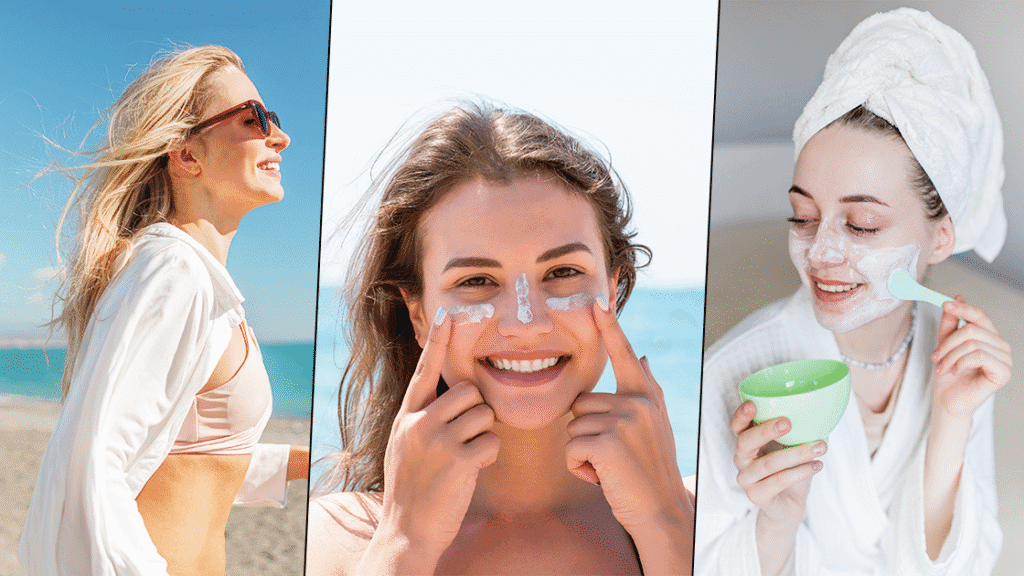
5.3.2 Recommended Skincare Products
The selection of appropriate skincare products during the post-treatment period plays a crucial role in optimizing healing and maintaining results. Gentle, fragrance-free cleansers should be used to avoid irritation of treated skin. Moisturizers containing ceramides, hyaluronic acid, or other hydrating ingredients help maintain skin barrier function and promote healing. Patients should avoid products containing retinoids, alpha-hydroxy acids, or other potentially irritating ingredients for at least one week following treatment. Antioxidant serums containing vitamin C or niacinamide may be beneficial for promoting healing and preventing oxidative damage. The use of gentle, mineral-based sunscreens is preferred over chemical sunscreens during the immediate post-treatment period to minimize the risk of irritation.
5.4 How Many Sessions Will You Need?
The number of pico laser sessions required varies significantly based on the severity of sun damage, individual skin characteristics, and treatment goals. Most patients require 2-4 sessions spaced 4-6 weeks apart to achieve optimal results for pigmentation disorders and skin rejuvenation. Deeper wrinkles and more severe sun damage may require additional sessions or combination treatments with other modalities. The gradual nature of collagen remodeling means that results continue to improve for several months following the final treatment session. Maintenance treatments may be recommended every 6-12 months to sustain results and address any new signs of aging or sun damage. Patient expectations should be managed appropriately, with realistic timelines provided for achieving desired outcomes. Regular follow-up appointments allow for assessment of treatment progress and adjustment of treatment plans as needed.
6. Is Pico Laser Right for You?
Determining candidacy for pico laser treatment requires careful evaluation of individual patient factors, treatment goals, and potential risks to ensure optimal outcomes and patient satisfaction.
6.1 Ideal Candidates for Pico Laser
Individuals with mild to moderate sun damage seeking improvements in texture, tone, and clarity.
Patients with realistic expectations and willingness to follow post-treatment care instructions.
Those targeting sun spots, age spots, melasma, or fine lines for non-invasive correction.
People with stable health conditions and no contraindications to laser treatments.
Individuals committed to long-term sun protection and a consistent skincare regimen.
Patients seeking a non-invasive alternative to chemical peels or ablative laser treatments.
6.2 Who Should Avoid It?
Patients with active infections, inflammation, or open wounds in the treatment area.
Individuals prone to keloid formation or abnormal wound healing.
Those taking photosensitizing medications or with photosensitivity disorders.
Pregnant or breastfeeding women, due to hormonal skin sensitivity risks.
Patients with unrealistic expectations or seeking dramatic results after a single session.
Individuals with very dark skin tones may need special assessment and modified settings to reduce risk.
6.3 Consultation Tips: What to Ask Your Dermatologist
What is your experience level with pico laser therapy, especially for sun-damaged skin?
How many sessions will I need, and what kind of results can I realistically expect?
Are there risks specific to my skin type or medical history I should know about?
What is the total cost of treatment, and are financing options available?
What should I do to prepare for treatment, and how should I care for my skin afterward?
Can you show before-and-after photos of similar patients?
Are there any alternative treatments, and how do they compare in terms of safety and effectiveness?
7. Common Questions About Pico Lasers and Sun Damage
Yes. Pico lasers can significantly reduce sun spots, hyperpigmentation, and fine lines by stimulating collagen and breaking down excess melanin without damaging surrounding tissue.
Most patients describe the sensation as mild snapping or tingling. Numbing cream is often applied beforehand to ensure comfort.
It’s best to wait 2–4 weeks after significant sun exposure to allow any inflammation or tanning to subside and minimize side effects.
Most people see visible improvement after 1–2 sessions, but 3–5 treatments spaced a few weeks apart may be recommended for optimal results.
Yes—with expert guidance. Pico lasers are considered safer for darker skin tones than traditional lasers, but settings must be adjusted accordingly by a trained provider.
Mild redness or swelling may occur and typically resolves within 24 hours. Avoid sun exposure and follow aftercare for best healing and protection.
8. Conclusion: Give Your Skin a Fresh Start After Summer
The end of summer presents an ideal opportunity to address the cumulative effects of sun exposure and begin a comprehensive skin recovery program. Pico laser technology offers a sophisticated, scientifically-backed approach to treating sun damage while promoting long-term skin health.
8.1 Don’t Let Summer Linger on Your Skin
The visible and invisible effects of summer sun exposure require proactive treatment to prevent long-term complications and maintain optimal skin health. Delaying treatment allows photodamage to compound over time, making future interventions more challenging and potentially less effective. The advanced capabilities of pico laser technology make it possible to address multiple aspects of sun damage simultaneously, providing comprehensive rejuvenation that restores skin’s natural beauty and function. Early intervention not only improves current appearance but also helps prevent future aging and reduces the risk of skin cancer development. The investment in post-summer skin recovery pays dividends in terms of both immediate aesthetic improvements and long-term skin health benefits.
8.2 Consult a Qualified Provider for Personalized Advice
The complexity of sun damage and the sophistication of pico laser technology require evaluation and treatment by qualified medical professionals with extensive experience in laser therapies. A comprehensive consultation allows for proper assessment of individual needs, development of customized treatment plans, and establishment of realistic expectations. Professional guidance ensures safe and effective treatment while minimizing risks and optimizing outcomes. The importance of ongoing medical supervision throughout the treatment process cannot be overstated, as regular monitoring allows for adjustment of treatment parameters and early identification of any complications. Patients should seek providers who prioritize safety, have extensive experience with pico laser technology, and demonstrate commitment to achieving optimal patient outcomes.
9. References and Trusted Sources
- Ringiovanimento della pelle
- Il laser Pico è il segreto per una pelle più liscia
- Lunghezze d'onda del laser Pico (532nm vs. 1064nm): Quale trattamento?
- Picosecond Lasers: A New and Emerging Therapy for Skin of Color, Minocycline-induced Pigmentation, and Tattoo Removal
- Trattamento del melasma con un laser a dominio di picosecondi da 1064 nm con un array di lenti multiraggio frazionato
Un aggiornamento sul trattamento laser frazionato a picosecondi: istologia e applicazioni cliniche


